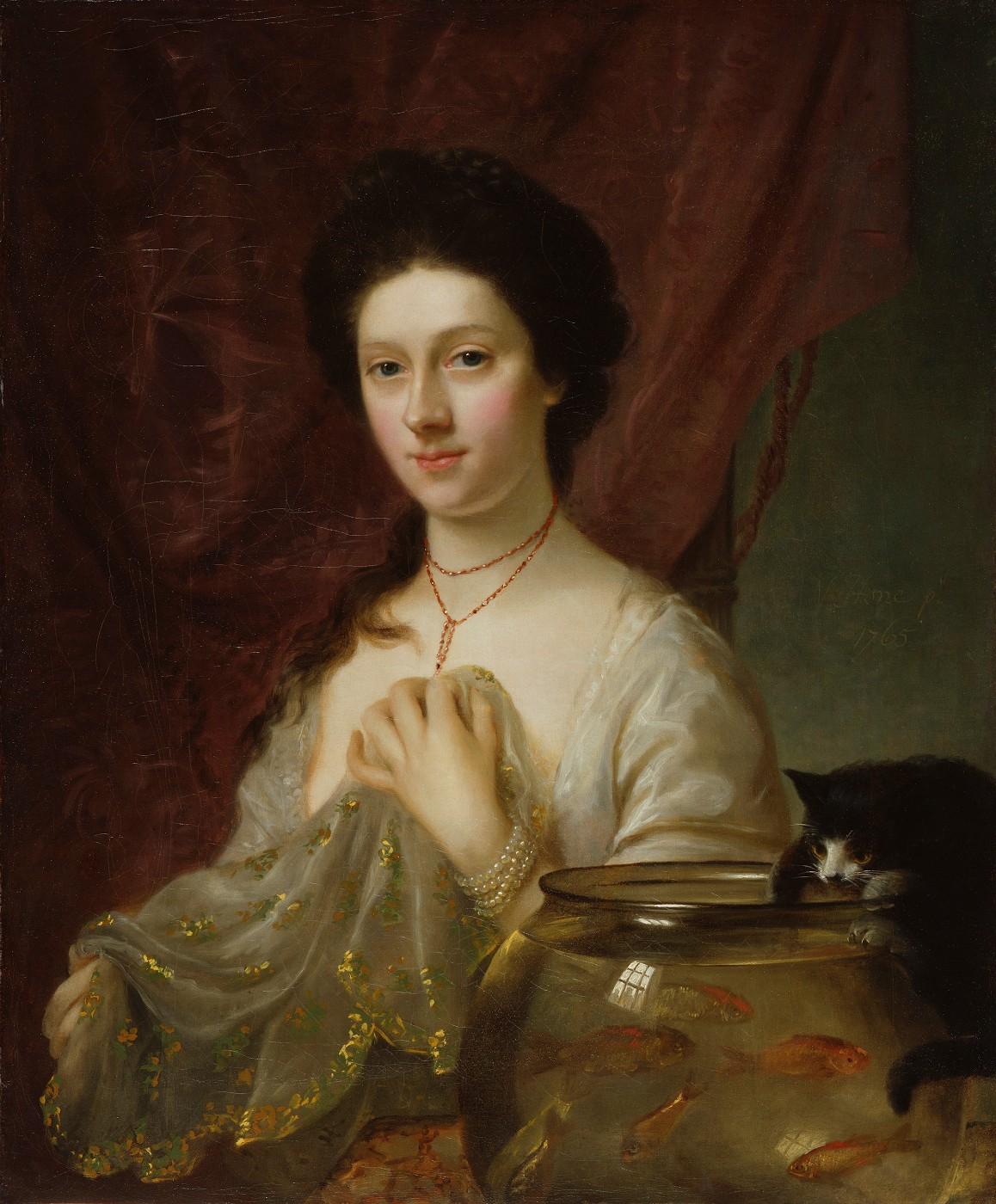“The exhibition draws on the MFA’s renowned holdings of European decorative arts, particularly French and English furniture and silver, as well as Italian, German and French porcelain. When viewed in the rich context of painting, sculpture and costume, these objects help to bring Casanova’s Europe to life,” said Thomas Michie, Russell B. and Andrée Beauchamp Stearns Senior Curator of Decorative Arts and Sculpture, Art of Europe. “Major new acquisitions are on display for the first time, and many works of art have been cleaned and conserved specifically for this exhibition.”
Casanova’s Europe: Art, Pleasure, and Power in the 18th Century takes visitors on a journey to the art capitals of Europe—especially Venice, Paris and London—that were significant to Casanova. The tour begins in his birthplace of Venice, where he grew up and returned repeatedly during his travels. Canaletto’s famous views of the Grand Canal, Piazza San Marco and the Palazzo Ducale introduce visitors to the sights and spectacles of the cosmopolitan city, while paintings by Giovanni Battista Tiepolo and Pietro Longhi, paired with gilded furnishings, provide a sense of the splendid interiors of Venetian palaces that expressed their owners’ wealth and sophistication.
In Casanova’s time, Venice was a city of masks. Within the rigid Venetian social hierarchy, the mask afforded a degree of anonymity—allowing wearers to interact across classes, and lending an appearance of equality in a city whose inhabitants constantly jockeyed for social status. The importance of masquerade in Venetian culture is explored through paintings such as The Ridotto of Palazzo Dandolo (about 1750, Private Collection) by Francesco Guardi and The Charlatan (1756, Museu Nacional d’Art de Catalunya, Barcelona) by Giovanni Domenico Tiepolo. Additionally, brightly costumed and elaborately posed porcelain figures from the MFA’s collection represent stock characters from commedia dell’arte, a popular genre of entertainment performed in theaters and outdoors throughout Europe.
“Casanova’s impulse to record his life and travels in his memoirs has given us a rich trove of information about mid-18th-century Europe. Following an introduction to his hometown of Venice, visitors to the exhibition can trace his many journeys across the continent—spanning 40,000 miles across six decades—and along the way, explore the highest achievements in art of the era,” said Courtney Harris, Curatorial Research Fellow, Art of Europe.
Casanova visited Paris, the cultural capital of Europe, on numerous occasions. Paintings, furniture, musical instruments and precious objects such as gold snuffboxes and a silver-gilt toilette service evoke the types of splendid Parisian interiors that he gained access to through influential connections such as the Marquise de Pompadour, the famous mistress of King Louis XV. More than any other city in Europe, Paris also embraced the spirit of libertinism—a term coined in the 17th century—which advocated the abandonment of polite society’s conventions regarding romantic love and sexual expression. While denounced in public, libertine beliefs were sometimes celebrated privately—a paradox mimicked in art. Classical mythology provided subject matter for artists seeking to explore overly erotic themes in a publicly palatable manner. Boucher’s monumental Mythological Scenes (1769, Kimbell Art Museum and J. Paul Getty Museum), which depict six stories from ancient Roman literature united by the theme of love, serve as prime examples of the exuberant Rococo style that flourished in 18th-century Paris. Additionally, smaller-scale works by Fragonard feature intimate imagery that would have been commissioned by private request, often for the enjoyment of male viewers.
When Casanova visited London in the 1760s, it was Europe’s most populous city; by 1800, it would be the largest in the world. A center of commerce, banking and manufacturing, London was known for its stylish shops, selling all kinds of luxury goods, as well as new venues and opportunities to socialize and carouse. The city attracted artistic talent from across Europe, including Canaletto, whose Westminster Bridge, with the Lord Mayor’s Procession on the Thames (1747, Yale Center for British Art) sets the stage for the city that Casanova encountered, depicting the newly completed Westminster Bridge—an engineering marvel—and the towers of Westminster Abbey. The Lady’s Last Stake(1759, Albright-Knox Art Gallery) by William Hogarth and A Midnight Modern Conversation (after Hogarth, 1732, Yale Center for British Art) illustrate two of Britain’s favorite pastimes in the 18th century: card playing and drinking parties.
The exhibition also explores Casanova’s brief imprisonment on charges of heresy in the Palazzo Ducale in Venice (evoked by the haunting imaginary prisons of Giovanni Battista Piranesi); his journeys beyond Italy, France and Spain to Dresden, St. Petersburg and Constantinople (depicted in works by Bernando Bellotto, Louis Nicolas de Lespinasse and Jean Etienne Liotard); and the perils of travel in the 18th century (illustrated through paintings by Casanova’s younger brother, Francesco Casanova).
The final sections of the exhibition invite visitors to experience the art of fine dining in Casanova’s time and acquaint themselves with famous individuals he met or befriended during his travels. Projected onto a table that visitors can gather around, a video installation produced by the Detroit Institute of the Arts re-creates a multi-course meal that would have been served in the 18th century, showing historically accurate food presented on period porcelain and silver. Historical examples of such tableware can be seen within the exhibition. In a gallery devoted to portraits of the great minds of Casanova’s era—Benjamin Franklin, King George III, Catherine the Great, Samuel Johnson, Madame de Pompadour, Jean Jacques Rousseau, Voltaire, Jean le Rond d’Alembert, Pope Clement XIII, Pope Benedict XIV and Anton Raphael Mengs—visitors can take a quiz on an iPad (also available online) to reveal their ideal 18th-century dinner party guest.




























![DEl Kathryn Barton [Australian b. 1972] the more than human love , 2025 Acrylic on French linen 78 3/4 x 137 3/4 inches 200 x 350 cm Framed dimensions: 79 7/8 x 139 inches 203 x 353 cm](/sites/default/files/styles/image_5_column/public/ab15211bartonthe-more-human-lovelg.jpg?itok=wW_Qrve3)